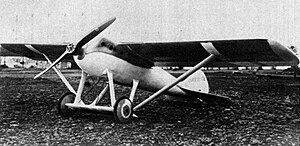
Nieuport, later Nieuport-Delage, was a French aeroplane company that primarily built racing aircraft before World War I and fighter aircraft during World War I and between the wars.

The Nieuport-Delage NiD 52 was a French fighter aircraft of the 1920s. A single-engined sesquiplane, it served with the Spanish Air Force, being operated by both sides of the Spanish Civil War.
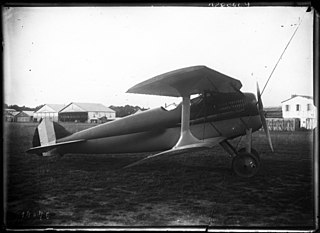
The Blériot-SPAD S.20 was a French fighter aircraft developed near the end of World War I. Too late to serve in the war, almost 100 of these aircraft equipped the French Air Force in the years immediately following. These agile aircraft were also used successfully for air racing and record-setting.

The Nieuport-Delage NiD.62 was a French sesquiplane fighter from the early 1930s. This machine was a descendant of a long line of Nieuport-Delage fighters that were designed and built during the years immediately after World War I. The NiD.62 was built in 1931 as a fighter for the Armée de l'Air. It served until the late 1930s, when it was replaced by more modern monoplane fighters. By the time of the outbreak of World War II in September 1939, all of the NiD.62s had been withdrawn from front-line fighter escadrilles but were used as trainers in French flight schools. A few aircraft were employed as target tugs. After the French German Armistice and German occupation of North and West part of France in June 1940, the German Luftwaffe had no interest in the NiD.62s and they were scrapped. None survived the war.
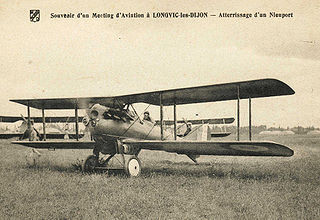
The Nieuport-Delage NiD.29 was a French single-seat biplane fighter designed and built by Nieuport-Delage for the French Air Force.

The Navy-Wright NW series, also called the Mystery Racer were racing aircraft built by Wright Aeronautical Corporation at the request of the US Navy. Although innovative, both prototype racers were lost before achieving their true potential.

The Nieuport-Delage NiD 30 was a French airliner which entered service in 1920. It was a conventional biplane design with an enclosed cabin that seated four passengers and an open cockpit for the pilot. Provision was also made for a wireless transmitter, receiver, and operator. Seven examples were operated by Compagnie générale transaérienne on its Paris–London route on twice-daily return services.
The Nieuport-Delage NiD 38 was a touring aircraft built in small numbers in France in the early 1920s. It was a single-bay biplane of conventional design with an enclosed cabin for two passengers and an open cockpit for the pilot.

The Nieuport-Delage NiD 39 was an airliner produced in France in the late 1920s, developed from the NiD 38. The airline Compagnie Aérienne Française had purchased four examples of the previous aircraft and ordered an improved version with greater passenger capacity from the manufacturer. Like its predecessor, the NiD 39 was a single-bay biplane of conventional design with an enclosed cabin its passengers and an open cockpit for the pilot. However, while the NiD 38 could only carry two passengers, the NiD 39 could carry four. CAF also specified the engine to be used – the Armstrong Siddeley Lynx – although the first eight examples produced flew with the same Hispano-Suiza engine that had powered the NiD 38. The airline operated around thirty examples on routes between western European cities until 1932.

The Nieuport-Delage NiD 42 was a fighter aircraft built in France in the early 1920s, the first in a family of designs that would form the backbone of the French fighter force over the next decade.

The Nieuport 14 was a military reconnaissance sesquiplane produced in France during the First World War. The French Army deployed it in 1916 but the type was quickly withdrawn from front-line service.

The Nieuport-Delage NiD 120 series was a series of French single-seat parasol monoplane fighter aircraft of the 1930s. It was built in a number of versions, fitted with various types of engines, with six aircraft designated NiD 123 being sold to Peru.
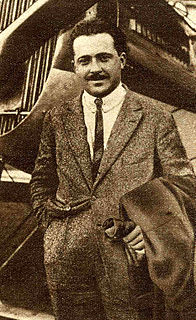
Joseph Sadi-Lecointe was a French aviator, best known for breaking a number of speed and altitude records in the 1920s.
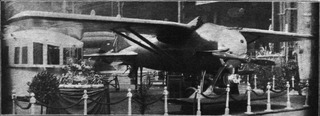
The Nieuport-Delage NiD 37 was a single-engine, single-seat monoplane fighter aircraft and racer designed and built in France in the early 1920s. It had a small foreplane to bring the centre of pressure forward. Heavy, slower than expected and with turbo-supercharger problems, development ended without any entering service.

The Nieuport-Delage NiD 48 was a French single-engine parasol wing light fighter aircraft, designed and built in the 1920s. Its performance was not markedly better than that of the much heavier Nieuport-Delage NiD 62 then going into production, so only two were flown.

In October 1917 Nieuport began construction of a prototype monoplane fighter known as the Nieuport Madon, a strut braced monoplane.

The Coupe Deutsch de la Meurthe was an international aeronautical speed competition instituted on 25 August 1909 by the French oil magnate Henry Deutsch de la Meurthe. The race was reinstated three times through the years at the initiative of the Aéro-Club de France, and later by Deutsch de la Meurthe's daughter Suzanne.
The Nieuport-Delage NiD 450 was a French racing floatplane, originally intended to compete for the 1929 Schneider Trophy. After the French decided not to participate that year, the type was used as the NiD 650 to speed the development of the proposed entrants to the 1931 event, the NiD 651 and NiD 652. Delays in producing the latters' engines left these unflown.

The Nieuport-Delage NiD 940 was a French, tailless, pusher configuration touring aircraft first flown in 1934. It suffered from longitudinal instabilities and despite modifications and a more powerful engine, it did not receive its Certificate of Airworthiness.
The Neiuport-Delage NiD 690 was a French all-metal, single-engined colonial policing aircraft, built for a competitive government contract. Its unusual rear fuselage gave a wide field of downward machine gun fire. Only two examples were built.
